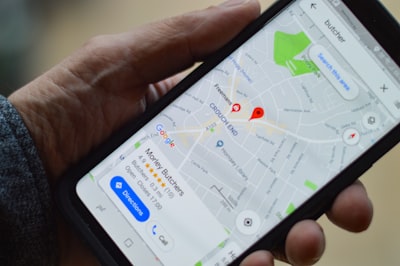Effective Strategies for Targeting Different Locations for Better SEO Without Negative Impact
Location-based targeting, also known as geotargeting, is a marketing strategy in digital marketing that involves delivering specific content or advertisements to users based on their geographical location. This strategy has become increasingly popular in recent years due to the growth of mobile devices and the increased availability of location data.
What are “serp rankings”? In this article, we will explore the benefits of location-based targeting and how businesses can use it to reach their target audience more effectively and achieve better serp rankings.
Targeting Different Locations for Better SEO
When it comes to attracting local consumers from various locations, having a local SEO strategy in place is essential. This is particularly true for businesses with franchises or branches in different cities or countries that offer services to multiple locations or even ship products internationally. Without a solid strategy in place, it can be challenging to target traffic from consumers in specific locations.
By utilizing multiple-location SEO, you can optimize your website for different locations and search queries, making it easier for consumers to find you. This approach involves creating location-specific pages on your website, using location-based keywords in your content, and ensuring that your business information is consistent across all online platforms, including social media and business directories.
For instance, if someone searches for McDonald's in New York, Google search results will display information about nearby branches in the city. This is because McDonald's has implemented a local SEO strategy that targets customers in different locations, making it easy for them to find nearby branches.
In summary, if you have franchises or branches in different cities or countries, it's crucial to implement a multiple-location SEO approach. By optimizing your website for different locations and using location-based keywords in your content, you can attract more traffic from local consumers and increase your chances of driving conversions.
How Targeting Different Locations Can Benefit Your Business
Increases Relevance
Location-based targeting helps businesses deliver more relevant content and ads to their target audience by using location-specific keywords. By using a user's location data, businesses can tailor their content and advertising to better fit the user's needs and interests. For example, a restaurant chain can use location-based targeting to promote their new menu items to people who are nearby.
Improves Conversion Rates
Location-based targeting can also help improve conversion rates. Targeting users who are in close proximity to a business, businesses can increase the likelihood that the user will take action, such as making a purchase or visiting a physical store. This is especially important for businesses with physical locations, as location-based targeting can help drive foot traffic.
Reduces Advertising Waste
Location-based targeting can help reduce advertising waste by ensuring that ads are only delivered to users who are likely to be interested in them. This can help businesses save money by avoiding advertising to users who are unlikely to convert.
How Location Based Targeting Works
Location-based targeting works by using a user's location data to deliver content or ads that are relevant to their location. There are several methods for gathering location data, including GPS, Wi-Fi, and IP addresses.
GPS is the most accurate method of gathering location data, as it can pinpoint a user's exact location. However, it can be battery-intensive and may not work well indoors.
Wi-Fi and IP addresses are less accurate but can still provide useful location data. Wi-Fi can be used to determine a user's location based on the Wi-Fi networks they are connected to, while IP addresses can provide a general idea of a user's location based on their internet service provider.
Once location data has been gathered, businesses can use it to deliver relevant content and ads to users based on their location. For example, a retailer could use geotargeting to deliver ads promoting a sale at a specific store location to users who are nearby.
How Businesses Can Use Location-Based Targeting
There are several ways that businesses can use location-based targeting to reach their target audience more effectively. Here are some examples:
Promote Physical Store Locations On The Internet
Location-based targeting can be used to promote local business with physical store locations to users who are nearby. For example, a retailer could use geotargeting to promote a sale at a specific store location with google my business to users who are within a certain radius of the store.
Deliver Relevant Content
Location-based targeting can be used to deliver relevant content to users based on their location. For example, a tourism website could use geotargeting to deliver information about local attractions and events to users who are visiting a specific city.
Check out how to start keyword research the best way
Target Specific Demographics to Improve Ranking
Location-based targeting can also be used to target specific demographics according to the location of your business. For example, a car manufacturer could use geotargeting to deliver ads promoting their luxury models to users who are in affluent neighborhoods.
Retarget Visitors
Location-based targeting can also be used to retarget visitors who have previously visited a physical store location. For example, a retailer could use geotargeting to deliver ads promoting a sale to local customers who have previously visited one of their store locations.
Tips for Successful Location-Based Targeting
Here are some tips for businesses looking to use location-based targeting in a great way:
Optimize Google Business Profile Listing
Optimizing your Google business profile is crucial as location page on google maps for getting noticed by potential customers. To do this, claim and verify your profile, add contact information, complete all information, use high-quality images, add a business description, encourage customer reviews, and use Google My Business Insights to make informed decisions.
Use Accurate Location Data
Using accurate location data is crucial for the success of location-based targeting. Businesses should use the most accurate location data available to ensure that their ads are delivered to the right users. GPS is the most accurate method, but Wi-Fi and IP addresses can also provide useful location data.
Set the Right Radius
Businesses should set the right radius for their location-based targeting campaigns. The radius should be large enough to reach a significant number of users but not so large that it includes users who are unlikely to be interested in the content or ads.
Test and Optimize
Businesses should test their location-based targeting campaigns and optimize them based on the results. They should monitor the performance of their campaigns and make adjustments as needed to improve their effectiveness.
Have You Considered Privacy?
Privacy is an important consideration when using location-based targeting. Businesses should be transparent about their use of location data and ensure that they are in compliance with relevant privacy laws and regulations.
Use Multiple Channels
Businesses should use multiple channels for their location-based targeting campaigns. For example, they could use social media ads, search engine ads, and display ads to reach their target audience more effectively.
Conclusion
Location-based targeting is an effective marketing strategy that can help businesses reach their target audience more effectively. By delivering relevant content and ads based on a user's location, businesses can increase the relevance of their marketing efforts and improve conversion rates. However, businesses should use accurate location data, set the right radius, test and optimize their campaigns, consider privacy, and use multiple channels for the best results. With these tips in mind, businesses can use location-based targeting to drive more traffic and sales to their physical store locations and improve their overall marketing effectiveness.
Useful Link:
https://blog.hubspot.com/marketing/search-has-changed-content-needs-to-evolve











